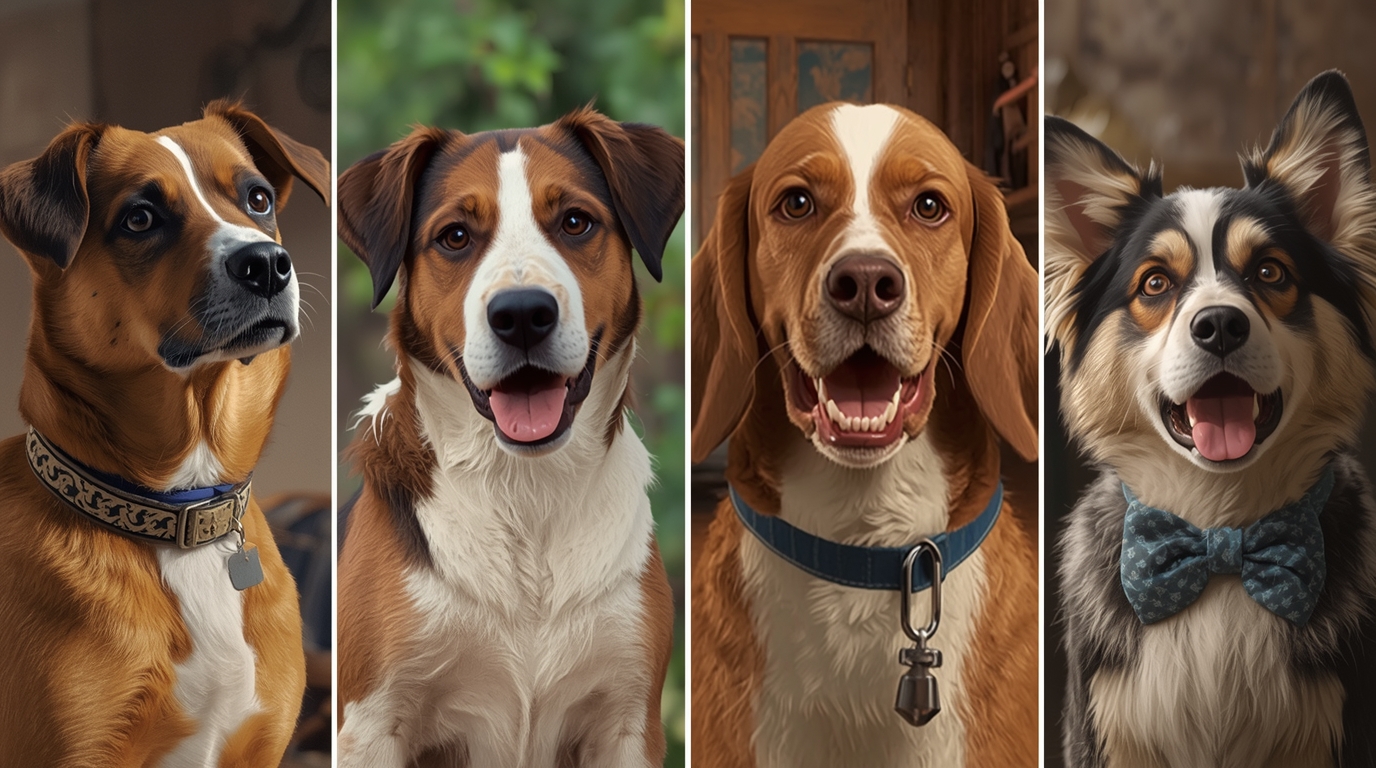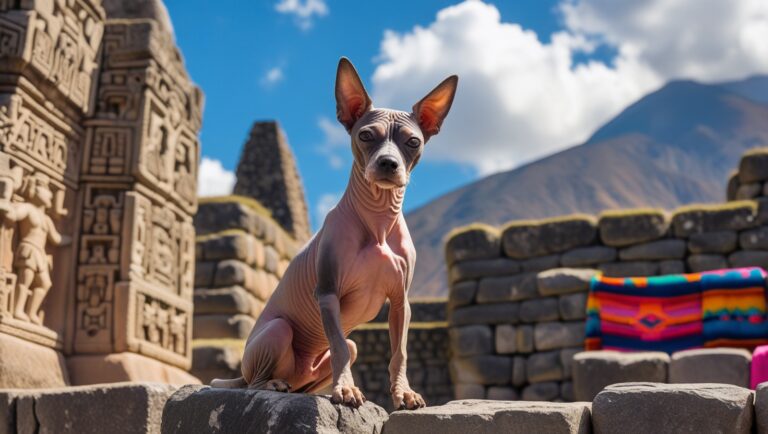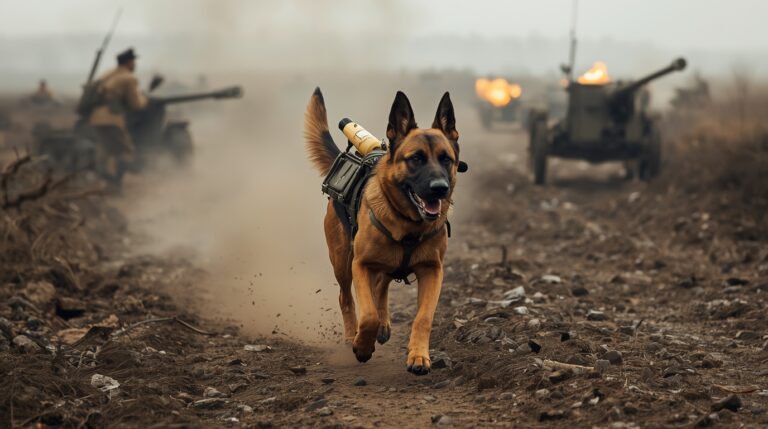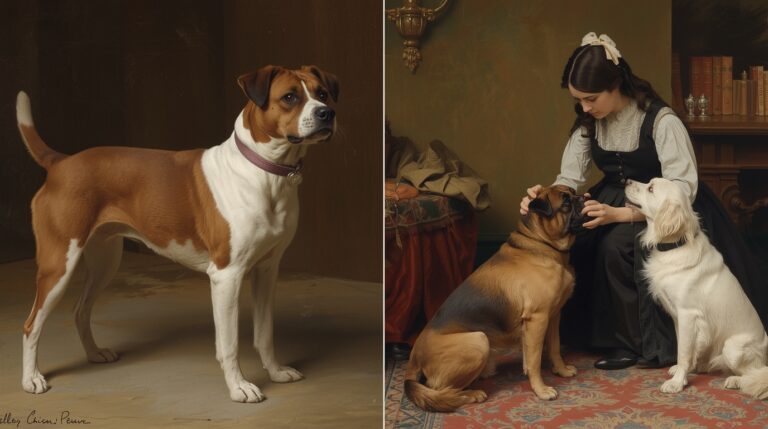Evolution of Dogs in Cinema and TV: From Silent Stars to Streaming Icons

Introduction
Dogs have been part of visual storytelling since the dawn of cinema. Their loyal, expressive, and often comical nature makes them ideal subjects for emotional and memorable performances. This article explores the evolution of dogs in cinema and TV, tracing the journey from early silent-era heroes like Rin Tin Tin to modern CGI-enhanced companions like Dug in Up or Buck in The Call of the Wild.
Early Days: Dogs in Silent Films (1900s–1920s)
Before dialogue graced the screen, dogs relied on visual expression to convey emotion. Rin Tin Tin, a rescued German Shepherd from WWI, debuted in Where the North Begins (1923), becoming Warner Bros.’ biggest star of the decade. Similarly, Strongheart, another German Shepherd, starred in action-packed melodramas, proving the commercial viability of canine actors.
These early films depicted dogs as heroes, rescuers, and loyal partners, often saving the human lead from danger. Their natural agility, intelligence, and trainability made them perfect for silent action sequences.
The Golden Age of Hollywood and Canine Loyalty (1930s–1950s)
The 1930s introduced sentimental family tales, with dogs embodying loyalty and moral virtue. Films like Lassie Come Home (1943) reinforced the idea of the faithful dog who would traverse continents to reunite with its family. Lassie, a Rough Collie, became one of the most beloved characters in film and later TV.
These portrayals mirrored post-war American values: loyalty, perseverance, and familial unity. Dogs served as mirrors of societal ideals, especially in times of hardship and change.
Dogs in Television: A New Era (1950s–1970s)
With the rise of television, dogs became more accessible household icons. The TV adaptation of Lassie (1954–1973) ran for nearly two decades, turning the loyal canine into a weekly source of moral storytelling. These series often revolved around rural communities, simple moral dilemmas, and the dog’s ability to sense danger or save lives.
New dog-focused shows, like The Adventures of Rin Tin Tin (1954–1959), gave dogs more screen time, often placing them at the center of the narrative, not just as sidekicks. TV also made it easier for young audiences to build emotional connections with recurring canine characters.
The Rise of Animated Dogs
Animated films revolutionized dog portrayals, removing the limitations of real animal performance. In 1955, Disney’s Lady and the Tramp presented a romantic drama through two anthropomorphized dogs—Lady, a refined Cocker Spaniel, and Tramp, a streetwise mutt.
“101 Dalmatians” (1961) not only entertained but sparked real-world breed crazes. The animation allowed for stylized movement, exaggerated expressions, and complex narratives told from a dog’s point of view. These stories laid the groundwork for future animated hits like All Dogs Go to Heaven (1989) and Balto (1995).
Dogs as Comedy Relief in the 1980s–1990s
During this period, dogs started serving as comic foils and sources of chaos in family comedies. Films like Beethoven (1992), starring a massive Saint Bernard, highlighted the mischief large dogs could cause in suburban homes. Similarly, Turner & Hooch (1989) paired Tom Hanks with a drooling French Mastiff in a buddy-cop comedy setting.
The 1990s saw a rise in hybrid dog genres: action-comedies (K-9), family chaos (Beethoven’s 2nd), and crime-solving animals (Wishbone on PBS). These films emphasized slapstick humor, family dysfunction, and unlikely friendships.
Anthropomorphism in Dog Characters
As storytelling advanced, so did the anthropomorphization of dog characters. Dogs began speaking, expressing human emotions, and engaging in philosophical or comedic dialogues.
In Homeward Bound (1993), Shadow, Chance, and Sassy (a cat) are voiced by human actors and exhibit emotional complexity as they journey to find their family. This trend continued into the 2000s with Bolt (2008), where the titular dog believes he’s a superhero due to life on a TV set.
Anthropomorphism deepened the emotional appeal but also blurred the line between animal instincts and human logic, creating a more relatable but less realistic canine image.
The 2000s Boom: Emotional Narratives
The 2000s marked a shift toward emotionally charged, realistic depictions of dog ownership. Marley & Me (2008), based on a memoir, portrayed the full arc of life with a dog—from joy to grief. The Golden Retriever Marley isn’t particularly heroic; instead, he is chaotic, lovable, and deeply real.
This realism resonated with modern audiences. Films such as A Dog’s Purpose (2017) and Hachi: A Dog’s Tale (2009) explored death, reincarnation, loyalty, and the passing of time through a dog’s eyes. Emotional themes like grief, growth, and unconditional love became central.
Dogs in Sports and Action Roles
The Air Bud franchise, beginning in 1997, opened a new niche: dogs participating in human sports. This Golden Retriever’s talents spanned basketball, football, soccer, and even baseball, appealing to younger audiences through athletic fantasy.
In a more realistic setting, movies like Snow Dogs (2002) and Togo (2019) highlighted working dogs in extreme environments, showcasing strength, endurance, and inter-species trust. These films reflect an evolving view of dogs—not just as companions but as capable participants in heroic, athletic efforts.
Working Dogs in Film
A parallel trend emerged featuring police, military, and service dogs. Films like Max (2015) and Megan Leavey (2017) portrayed dogs serving in the armed forces, handling dangerous missions, and developing deep emotional bonds with handlers.
In Togo, a Siberian Husky leads a real-life 1925 serum run, redefining the notion of dog heroism based on endurance, loyalty, and instinct rather than cartoonish bravery. These films honor dogs as public servants—not just pets—elevating their status in cinema.
The Role of CGI in Modern Dog Films
Modern technology introduced CGI (Computer-Generated Imagery) to dog-centric storytelling. In The Call of the Wild (2020), Buck was rendered entirely through CGI to allow complex expressions and stunts.
This approach offers creative flexibility and ethical benefits—no risk of harm to real dogs, more expressive faces, and physically impossible sequences. However, it can also distance viewers who crave realism and the charm of live-animal imperfection.
CGI enables more anthropomorphic storytelling, making dogs behave more “human” than ever before.
Dogs in Children’s TV and Animation
Television has always played a significant role in forming children’s views of dogs. Clifford the Big Red Dog, Bluey, and Paw Patrol introduce children to friendly, problem-solving dogs who reinforce teamwork, empathy, and family values.
These shows simplify dog behavior while embedding child-friendly lessons. Bluey, an animated Blue Heeler from Australia, addresses real family dynamics through the lens of canine play. The emotional intelligence shown in such series represents a nuanced and educational representation of pets.
Breed Popularity Influenced by Media
Dog breeds featured in popular films and shows often experience spikes in popularity. For instance:
- 101 Dalmatians (1961 & 1996) led to a surge in Dalmatian adoptions.
- Lassie increased demand for Rough Collies.
- Beethoven made Saint Bernards trendy.
Unfortunately, many of these adopters are unprepared for the breed’s energy levels, size, or care needs, leading to increased shelter surrenders. This highlights the ethical responsibility of media creators.
Behind the Scenes: Dog Training in Film
Successful dog performances depend heavily on skilled animal trainers. Dogs are trained using positive reinforcement, repetition, and bonding time with handlers and actors.
On sets, dogs learn cue-based behaviors, including facial reactions, barking on command, and hitting specific marks. In complex films, multiple dogs might be used to portray one character—one for action scenes, another for close-ups.
Training sessions can last months before filming, and many dogs transition into therapy or service work post-filming.
Representation of Dog-Human Bond
The central theme across all media eras is the emotional bond between humans and dogs. This is portrayed through:
- Rescue and return stories (Lassie Come Home)
- Loyalty until death (Hachi)
- Familial chaos (Marley & Me)
Film and TV repeatedly highlight dogs’ unwavering loyalty, protective instincts, and healing presence, reinforcing their position as more than companions—they are emotional equals.
Dogs in Global Cinema
Non-Western media also celebrates dogs in unique cultural contexts:
- Heart Is (South Korea, 2006): explores grief and resilience through a boy’s bond with his dog.
- Entertainment (India, 2014): a comedic film where a Golden Retriever inherits a fortune.
- Ten (Iran, 2002): symbolically includes dogs to question societal norms.
These films offer diverse cultural interpretations of canine roles, proving the universality of the dog-human bond.
Dogs in Advertising and Branding
Beyond film, dogs have long been marketing mascots, representing trust, friendliness, and reliability:
- Target’s Bull Terrier: Brand recognition icon.
- Spuds MacKenzie: Bud Light’s mascot in the 1980s.
- Taco Bell’s Chihuahua: Pop culture phenomenon in the ’90s.
Marketers use dogs to trigger emotional connections and enhance brand loyalty.
Ethical Treatment and Animal Rights in Filmmaking
As public awareness grew, regulations around animal welfare in film production became stricter. The American Humane Association ensures the presence of animal safety representatives on sets.
“No Animals Were Harmed” certifications are standard, and CGI is now favored for dangerous or emotionally taxing scenes. Some productions use trained stunt dogs or rescue animals, contributing to awareness and adoption efforts.
Dogs as Protagonists vs. Sidekicks
Historically, dogs were companions or helpers, but modern cinema increasingly casts them as protagonists. In films like A Dog’s Journey, Togo, and The Art of Racing in the Rain, dogs narrate or drive the story, rather than support it.
This shift reflects a broader cultural recognition of animal consciousness, empathy, and emotional range.
also read this Cultural Representation of Dogs Through History
Dogs in Streaming and New Media
Streaming platforms and social media democratized dog content. On YouTube, channels like Crusoe the Celebrity Dachshund reach millions. TikTok features everyday dogs gaining stardom through viral trends and comedic antics.
Netflix and Disney+ invest in dog content (Dog Gone Trouble, Pick of the Litter), proving ongoing demand. These platforms expand representation—showing rescue stories, service dog training, and canine therapy—with greater diversity and frequency.
Enduring Themes and Iconic Canine Archetypes
Certain archetypes recur throughout cinematic history:
- The Hero: Rin Tin Tin, Togo
- The Loyal Companion: Hachi, Marley
- The Comic Relief: Beethoven, Dug from Up
- The Protector: Lassie, Max
- The Innocent: Bolt, Clifford
These roles persist because they tap into deep emotional truths, making dogs enduring symbols of loyalty, joy, and resilience.
The Future of Dogs in Entertainment
Emerging trends like AI-generated pets, augmented reality, and virtual reality pet simulators point toward new ways to experience dogs in media. Interactive storytelling, where users build relationships with virtual dogs, may redefine viewer engagement.
Expect more diverse dog representation, global stories, and technological blending of realism and fiction. However, authenticity, empathy, and heartwarming connection will remain essential.
Conclusion
The evolution of dogs in cinema and TV reflects more than entertainment trends—it charts society’s shifting relationship with animals. From the silent-era action heroes to streaming-era emotional narrators, dogs have remained central figures in storytelling because of their universal symbolism and emotional resonance.
Whether as heroes, clowns, guardians, or friends, dogs will continue shaping screen narratives—reminding us of our better selves, one bark at a time.





